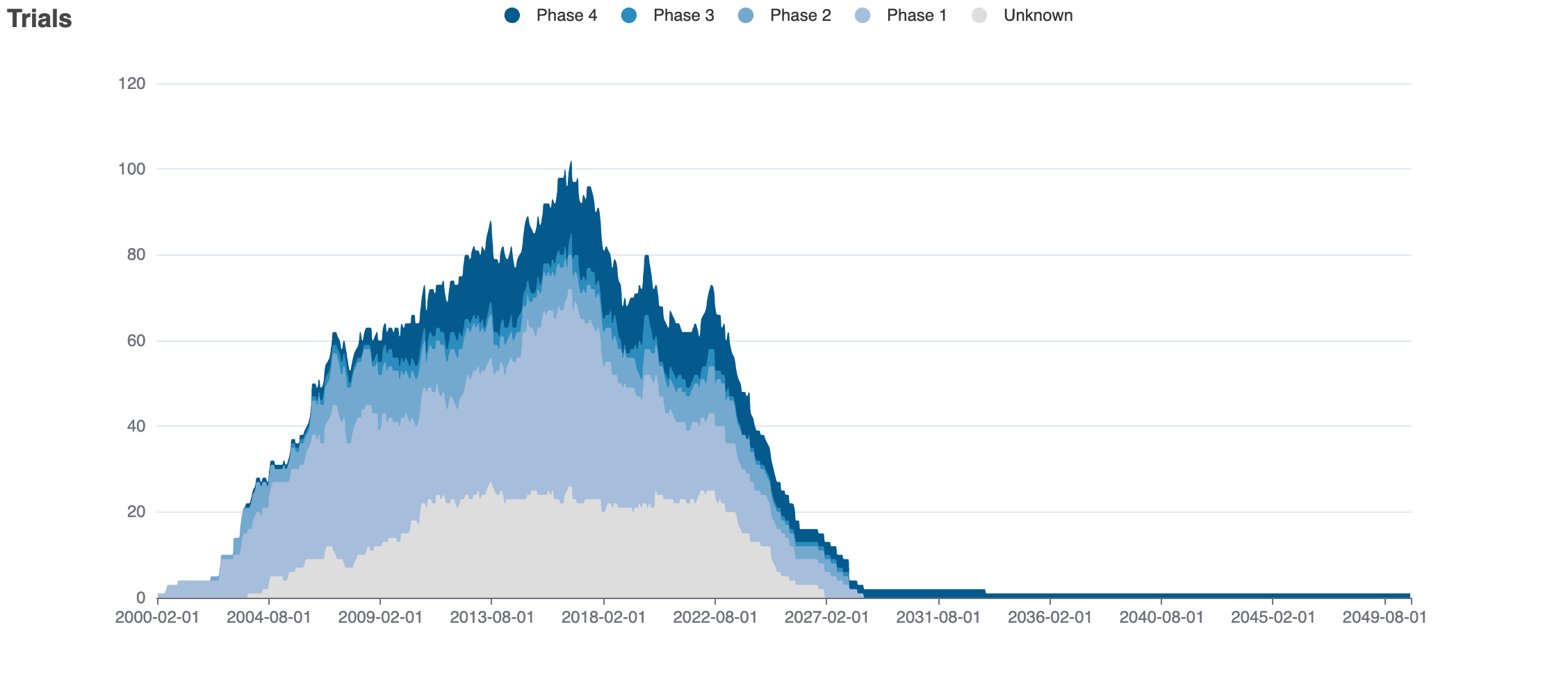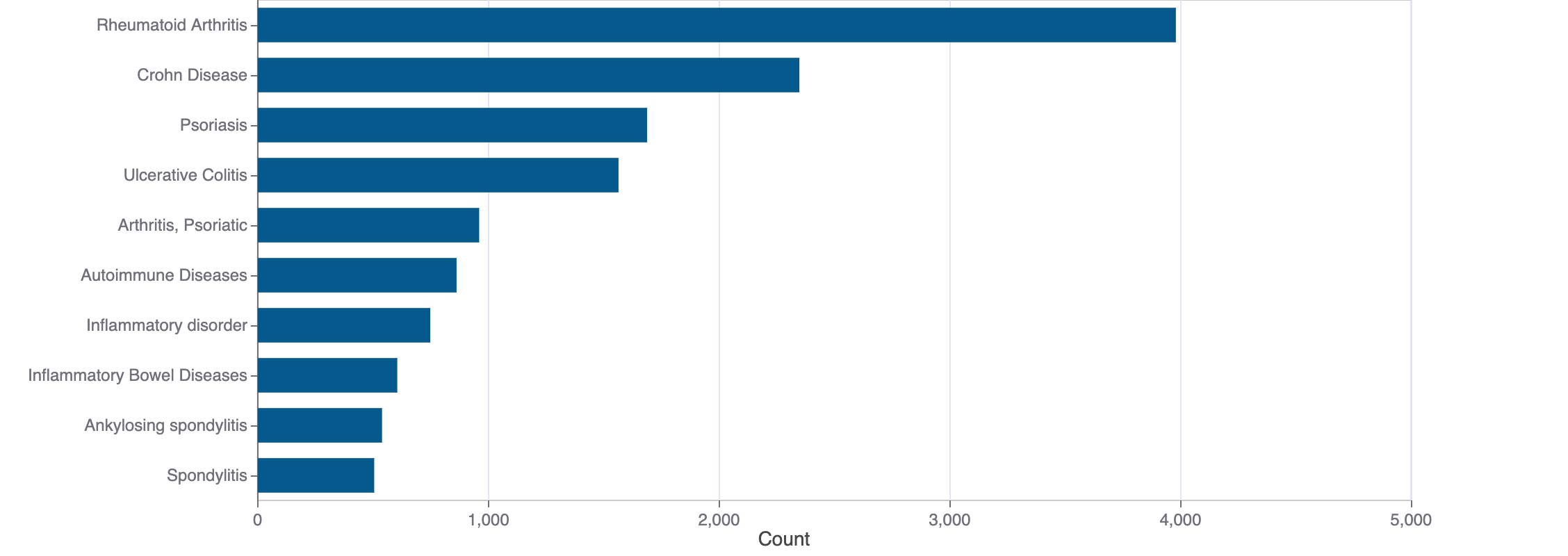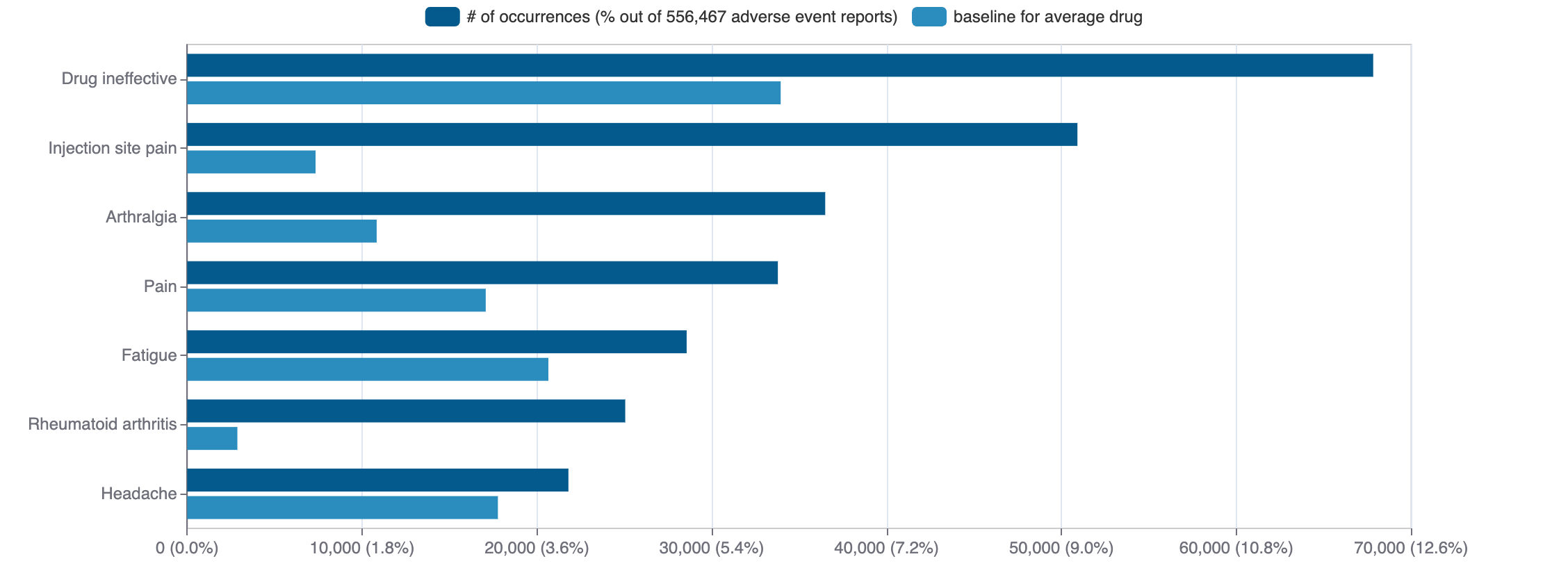Ezogabine
Potiga (ezogabine) is a small molecule pharmaceutical. Ezogabine was first approved as Potiga on 2011-06-10. It is used to treat partial epilepsies in the USA. The pharmaceutical is active against potassium voltage-gated channel subfamily KQT member 3, potassium voltage-gated channel subfamily KQT member 2, potassium voltage-gated channel subfamily KQT member 5, and potassium voltage-gated channel subfamily KQT member 4.
Download report
Favorite
Commercial
Therapeutic Areas
Therapeutic Area | MeSH |
|---|---|
| nervous system diseases | D009422 |
Trade Name
FDA
EMA
No data
Drug Products
FDA
EMA
New Drug Application (NDA)
New Drug Application (NDA)
Abbreviated New Drug Application (ANDA)
Abbreviated New Drug Application (ANDA)
Ezogabine
Tradename | Company | Number | Date | Products |
|---|---|---|---|---|
| POTIGA | GSK | N-022345 DISCN | 2011-06-10 | 4 products, RLD |
Hide discontinued
Labels
FDA
EMA
No data
Indications
FDA
EMA
Indication | Ontology | MeSH | ICD-10 |
|---|---|---|---|
| partial epilepsies | EFO_0004263 | D004828 | — |
Agency Specific
FDA
EMA
No data
Patent Expiration
No data
HCPCS
No data
Clinical
Clinical Trials
221 clinical trials
View more details

Mock data
Subscribe for the real data
Subscribe for the real data
Indications Phases 3
Indication | MeSH | Ontology | ICD-10 | Ph 1 | Ph 2 | Ph 3 | Ph 4 | Other | Total |
|---|---|---|---|---|---|---|---|---|---|
| Triple negative breast neoplasms | D064726 | — | 6 | 2 | — | — | 8 | ||
| Male breast neoplasms | D018567 | 1 | 1 | 2 | — | 2 | 6 | ||
| Ovarian neoplasms | D010051 | EFO_0003893 | C56 | — | 1 | 1 | — | — | 2 |
| Progression-free survival | D000077982 | — | — | 1 | — | — | 1 | ||
| Ductal carcinoma breast | D018270 | — | — | 1 | — | — | 1 | ||
| Fatigue | D005221 | HP_0012378 | R53.83 | — | — | 1 | — | — | 1 |
| Sleep wake disorders | D012893 | G47 | — | — | 1 | — | — | 1 | |
| Neoplasm metastasis | D009362 | EFO_0009708 | — | — | 1 | — | — | 1 |
Indications Phases 2
Indication | MeSH | Ontology | ICD-10 | Ph 1 | Ph 2 | Ph 3 | Ph 4 | Other | Total |
|---|---|---|---|---|---|---|---|---|---|
| Non-small-cell lung carcinoma | D002289 | 2 | 1 | — | — | — | 3 | ||
| Bone neoplasms | D001859 | EFO_0003820 | D16 | — | 1 | — | — | — | 1 |
| Hyperplasia | D006965 | EFO_0000536 | — | 1 | — | — | — | 1 | |
| Phenylketonurias | D010661 | E70.0 | — | 1 | — | — | — | 1 | |
| Prostatic neoplasms | D011471 | C61 | — | 1 | — | — | — | 1 | |
| Endometrial neoplasms | D016889 | EFO_0004230 | — | 1 | — | — | — | 1 | |
| Recurrence | D012008 | — | 1 | — | — | — | 1 |
Indications Phases 1
Indication | MeSH | Ontology | ICD-10 | Ph 1 | Ph 2 | Ph 3 | Ph 4 | Other | Total |
|---|---|---|---|---|---|---|---|---|---|
| Lung neoplasms | D008175 | C34.90 | 1 | — | — | — | — | 1 | |
| Kidney neoplasms | D007680 | EFO_0003865 | C64 | 1 | — | — | — | — | 1 |
| Healthy volunteers/patients | — | 1 | — | — | — | — | 1 |
Indications Without Phase
Indication | MeSH | Ontology | ICD-10 | Ph 1 | Ph 2 | Ph 3 | Ph 4 | Other | Total |
|---|---|---|---|---|---|---|---|---|---|
| Arthralgia | D018771 | HP_0002829 | M25.5 | — | — | — | — | 2 | 2 |
| Obesity | D009765 | EFO_0001073 | E66.9 | — | — | — | — | 2 | 2 |
| Pain | D010146 | EFO_0003843 | R52 | — | — | — | — | 1 | 1 |
| Vitamin d deficiency | D014808 | EFO_0003762 | E55 | — | — | — | — | 1 | 1 |
| Drug-related side effects and adverse reactions | D064420 | T88.7 | — | — | — | — | 1 | 1 | |
| Nutrition disorders | D009748 | EFO_0001069 | — | — | — | — | 1 | 1 |
Epidemiology
Epidemiological information for investigational and approved indications
View more details
Drug
General
| Drug common name | EZOGABINE |
| INN | retigabine |
| Description | Ezogabine is a substituted aniline that is benzene-1,2,4-triamine bearing ethoxycarbonyl and 4-fluorobenzyl substituents at positions N-1 and N-4 respectively. An anticonvulsant used to treat seizures associated with epilepsy in adults. It has a role as an anticonvulsant and a potassium channel modulator. It is a carbamate ester, an organofluorine compound, a substituted aniline and a secondary amino compound. It is functionally related to a benzene-1,2,4-triamine. |
| Classification | Small molecule |
| Drug class | gabamimetics |
| Image (chem structure or protein) | |
| Structure (InChI/SMILES or Protein Sequence) | CCOC(=O)Nc1ccc(NCc2ccc(F)cc2)cc1N |
Identifiers
| PDB | — |
| CAS-ID | 150812-12-7 |
| RxCUI | 1112990 |
| ChEMBL ID | CHEMBL41355 |
| ChEBI ID | 68584 |
| PubChem CID | 121892 |
| DrugBank | DB04953 |
| UNII ID | 12G01I6BBU (ChemIDplus, GSRS) |
Target
Agency Approved
KCNQ3
KCNQ3
KCNQ2
KCNQ2
KCNQ5
KCNQ5
KCNQ4
KCNQ4
Organism
Homo sapiens
Gene name
KCNQ3
Gene synonyms
NCBI Gene ID
Protein name
potassium voltage-gated channel subfamily KQT member 3
Protein synonyms
KQT-like 3, Potassium channel subunit alpha KvLQT3, potassium channel, voltage gated KQT-like subfamily Q, member 3, potassium channel, voltage-gated, subfamily Q, member 3, potassium voltage-gated channel, KQT-like subfamily, member 3, Voltage-gated potassium channel subunit Kv7.3
Uniprot ID
Mouse ortholog
Kcnq3 (110862)
potassium voltage-gated channel subfamily KQT member 3 (Q8K3F6)
Alternate
No data
Variants
Clinical Variant
No data
Financial
No data
Trends
PubMed Central
Top Terms for Disease or Syndrome:

Mock data
Subscribe for the real data
Subscribe for the real data
Additional graphs summarizing 1,657 documents
View more details
Safety
Black-box Warning
No Black-box warning
Adverse Events
Top Adverse Reactions

Mock data
Subscribe for the real data
Subscribe for the real data
11,512 adverse events reported
View more details
Premium feature
Learn more about premium features at pharmakb.com
Learn more
